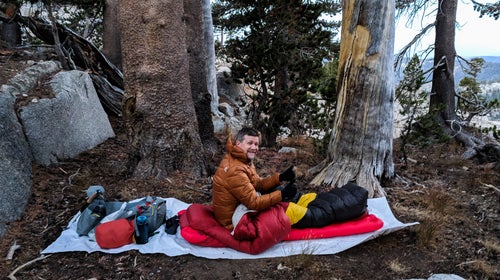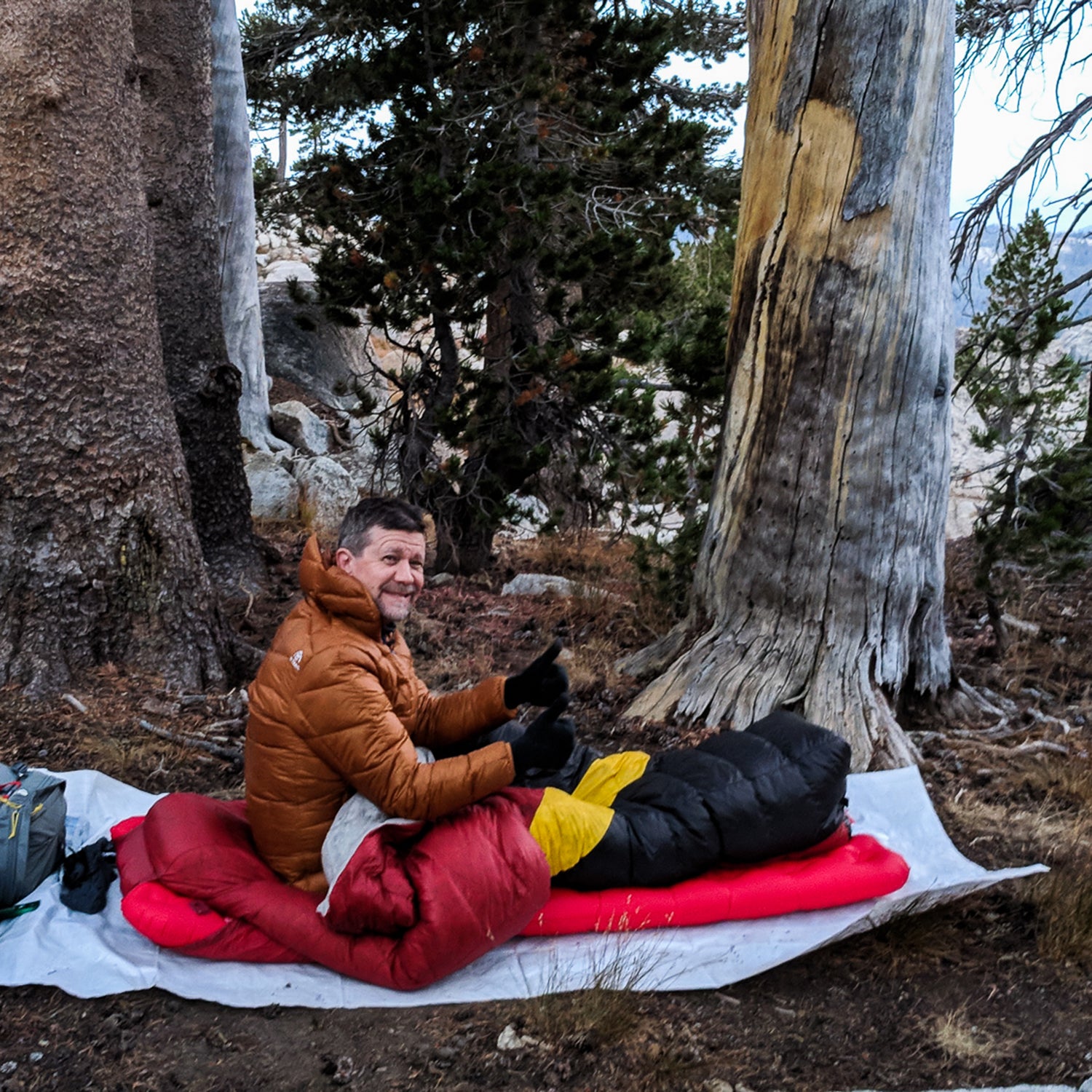Until last spring, Big Agnes had no sleeping pads in its line that interested me. The pads looked comfortable, but they were considerably heavier than my time-tested ($170, 12 oz).
But the weight and thickness of the the AXL sleeping pad caught my attention. It comes in two flavors: the ($140, 9.6 oz), for mild temperatures, and the ($180, 10.6 oz), for three-season conditions.
The listed prices and weights above are for the 20-by-72-inch mummy version. But both pads are also available in rectangular shapes: a wide AXL (25 by 72 inches) and, in the Insulated AXL, a petite (20 by 66 inches), regular (20 by 72 inches), regular wide (25 by 72 inches), and long wide (25 by 78 inches).
This year I have slept on the Insulated AXL (as a normal ground pad and as underinsulation in a hammock) for about 30 nights in southern Utah, the Colorado Rockies, and the High Sierra. Big Agnes sent me two pads, and I loaned one to my wife and to guided clients for additional feedback.
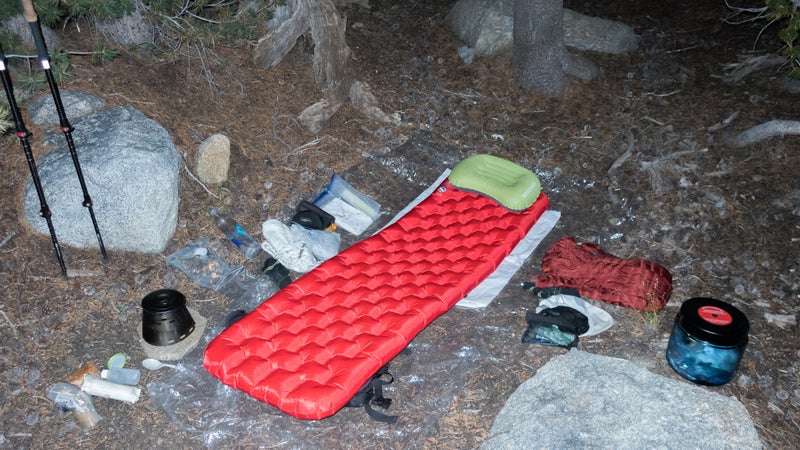
Review: Big Agnes Insulated AXL Sleeping Pad
The is a lightweight and comfortable sleeping pad that is best suited for weight-conscious backpackers who want quality sleep in the backcountry.
Big Agnes says that the 20-by-72-inch rectangular Insulated AXL that I tested weighs just 11.9 ounces, but mine weighs 12.6 ounces with the included stuffsack. In its factory packaging, it’s about the size of a one-liter bottle—although it’s difficult (and not worth the time, in my opinion) to pack it that tightly again. I roll mine to full width, fold it in half, and keep it in a larger stuffsack.

Of the pads that compete with the Insulated AXL’s size and weight, none match its thickness (3.25 to 3.75 inches) or have oversize outer tubes that help cradle the sleeper—a subtle but helpful feature.
The Insulated AXL is reasonably quiet, with none of the potato-chip-bag sensation of other leading pads. On my first trip out with it, during which I also used a new tent, it produced a sound similar to rubbing balloons together; but I have not noticed it since, leading me to think that it was the new pad, the new tent floor, or a combination of the two materials.
The Insulated AXL is appropriate for three-season conditions but definitely not for winter. Personally, I found the Insulated AXL to be amply warm in temperatures above 40 degrees Fahrenheit and acceptable in temperatures from 30 to 40 degrees Fahrenheit, so long as I took other measures to maximize my nighttime warmth (e.g., bringing a warm sleeping bag, picking a soft campsite, sleeping in my insulated clothing, and eating and hydrating well before bed).
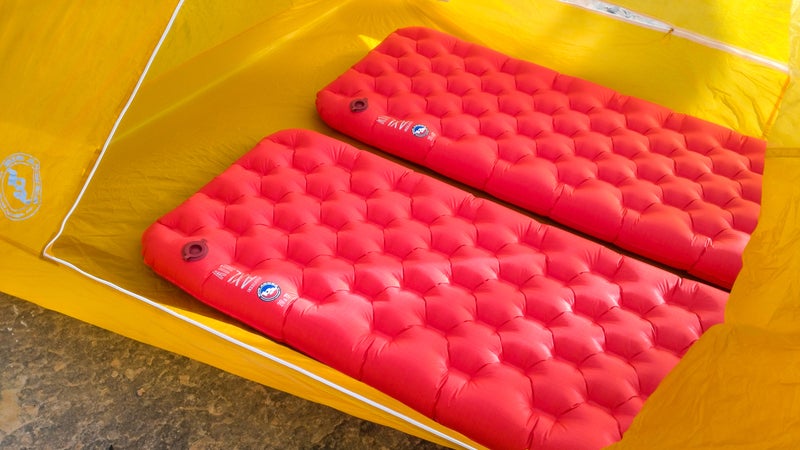
Key Specs
- Rated to 32 degrees Fahrenheit
- 3.75-inch-thick outer tubes, 3.25-inch inner tubes
- 20-denier, high-tenacity ripstop nylon top and bottom shell
- PrimaLoft Silver synthetic insulation laminated onto a Mylar sheet
- 10.6 oz to 15.9 oz, depending on the size
- $160 to $250, depending on the size
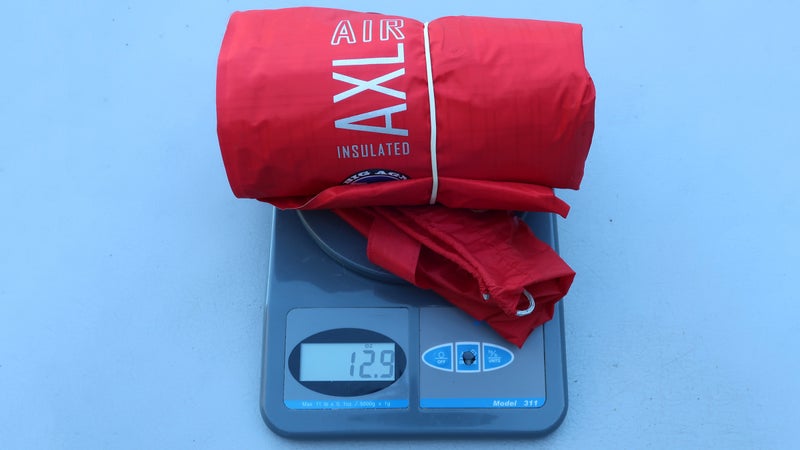
The Competition
For those who prioritize pack weight and volume, the Insulated AXL is one of two three-season pads that I can personally recommend, along with the aforementioned XLite.
On paper other contenders include:
- ($170, 13 oz), the most comparable pad to the AXL and XLite and comfortable, warm, and quiet.
- ($120, 16 oz), which is a few ounces heavier but a good value.
- ($160, 15 oz), updated for 2019, possibly causing closeouts of the current model.
- ($140, 17 oz), which is heavy but has proven to be reliable.
Big Agnes Insulated AXL versus Therm-a-Rest NeoAir XLite
The Insulated AXL is more comfortable than the XLite. It’s thicker and has oversize outside tubes, and it’s quieter.
But the XLite is warmer. I do not hesitate to use the XLite on elk-hunting trips in the Colorado Rockies in November or even on winter trips when I must sleep on snow. I would not use the Insulated AXL beyond three-season conditions.
If your backpacking season extends into the colder months, the XLite may cover you completely. Whereas if you were to purchase the Insulated AXL, you’d need an additional cold-weather pad.
Warmth
When the Insulated AXL was first released, Big Agnes recommended a usable range of 15 to 35 degrees Fahrenheit on its website and product packaging. Based on my experience, I believe these guidelines were generous, and unfortunately, REI—which was the exclusive distributor of the AXL and Insulated AXL when it was first released—hyped expectations even more by advertising it simply as a 15-degree pad.
Customers were not pleased, and they revenged their sleepless nights by giving the Insulated AXL .
Per the manufacturer website, the Insulated AXL is currently rated to 32 degrees. There’s no discussion of how Big Agnes arrived at this number, or exactly what it means. Is 32 degrees a comfort limit or a lower bound? And under what conditions (e.g., sleeping-bag-temperature rating, shelter type, ground-surface composition) would this rating apply?
What Is the R-value of the Insulated AXL?
Big Agnes does not publish (and from what I can tell, does not test in-house) R-values, which is a precise measure of a pad’s resistance to conductive heat transfer. These values are useful in comparing the absolute and relative warmth of a sleeping pad.
Why? Len Zanni, a co-owner of Big Agnes, explained to me in an e-mail that “We believe [R-values] are still not consistent. Different brands use different testing methods. Until there is a standard (we’re involved in industry efforts here) we’re trying to guide users into the right pads using recommended season and a season spectrum guide (on product packaging).”
Why Is the Insulated AXL Not Very Warm?
To understand why the Insulated AXL is less warm than other pads, it’s useful to understand its construction. The pad is kind of built like a sandwich, with the 20-denier, high-tenacity ripstop nylon acting as the bread and the PrimaLoft Silver synthetic insulation laminated to a Mylar sheet as the filling.
PrimaLoft Silver is available in different weights (e.g., 30, 60, and maybe 100 grams per square meter). Big Agnes wouldn’t share the insulation weight of the Insulated AXL, which it considers proprietary information. But based on what I can feel and see, I suspect that the lightest version of PrimaLoft Silver was used.
In addition to using a very lightweight insulation, Big Agnes also had to:
- Cut holes in the insulation so the bottom and top sheets could be quilted together.
- Cut the insulation in two (one half insulates the upper body; the other half, the lower body), creating a gap between these sheets.
Big Agnes was also unable to attach the insulation to the edges of the pad, leaving an insulationless gap around its perimeter.
With all of these holes and gaps, body-warmed air and ground-cooled air can circulate too easily, especially with active sleepers. Warmer pads trap air more effectively.
If Big Agnes could have produced a warmer pad without affecting the weight or price of the Insulated AXL, I’m sure that it would have. This is simply the cost of a 12-ounce pad that is nearly four inches thick.
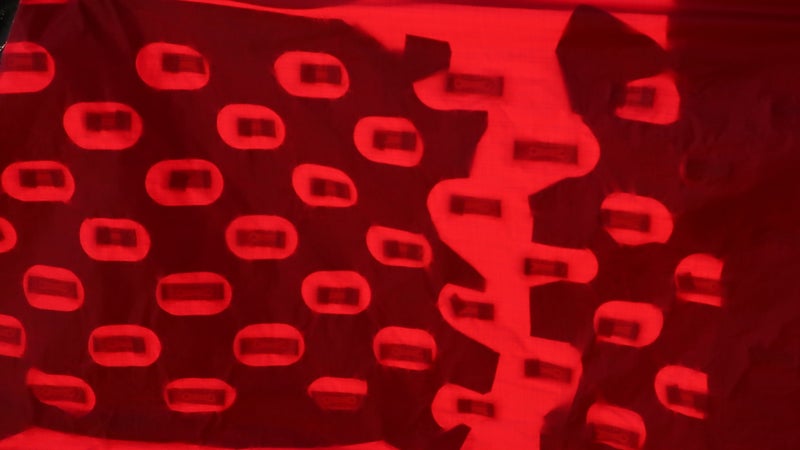
Durability
My Insulated AXL has not yet sprung a leak. But I’m careful with it. YMMV.
A client managed to break the valve on one of my pads. I didn’t get an explanation, but I bet it happened while rolling it up—if the valve flap is not in a closed position, it can get caught between the sheets and tear off.
Thankfully, the damaged pad is still usable: I blow it up completely and cap it as quickly as I can. About 25 percent of the air is lost, but that’s still plenty—in fact, that level of inflation is just about perfect.
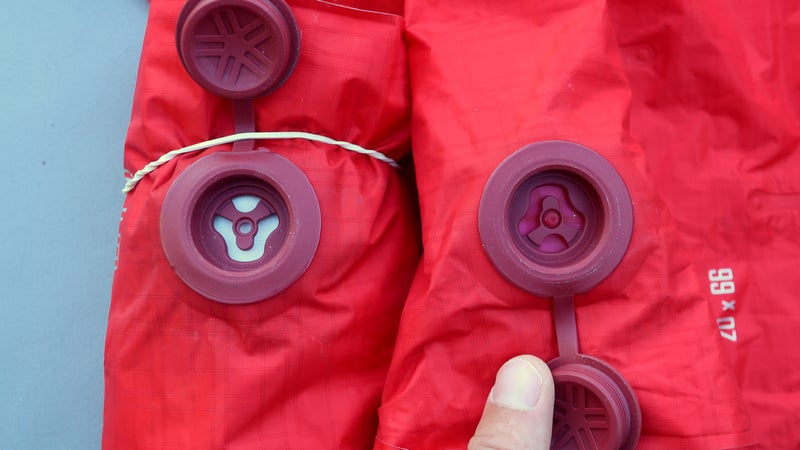
Inflation and Deflation
It’s a chore to blow up the Insulated AXL, requiring about 20 strong exhales. That’s only a few breaths more than the XLite, but it’s enough.
If you think backpacking is hard enough already, consider the ($35, 3 oz), which doubles as a stuffsack.
Deflation of the Insulated AXL is fast and easy: open the cap and press the valve flap. I do it while laying on the pad before I get up as body weight helps expel most of the air.
